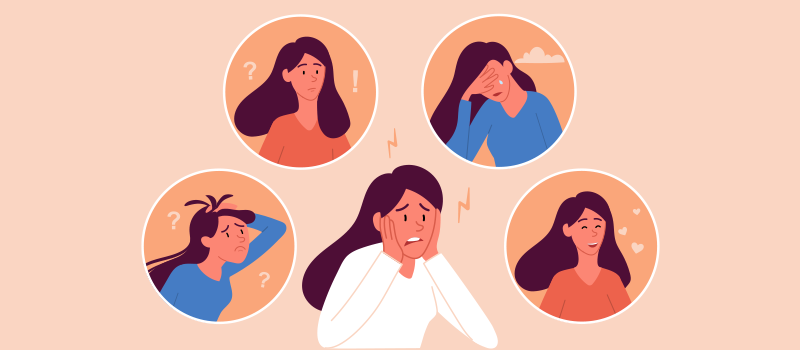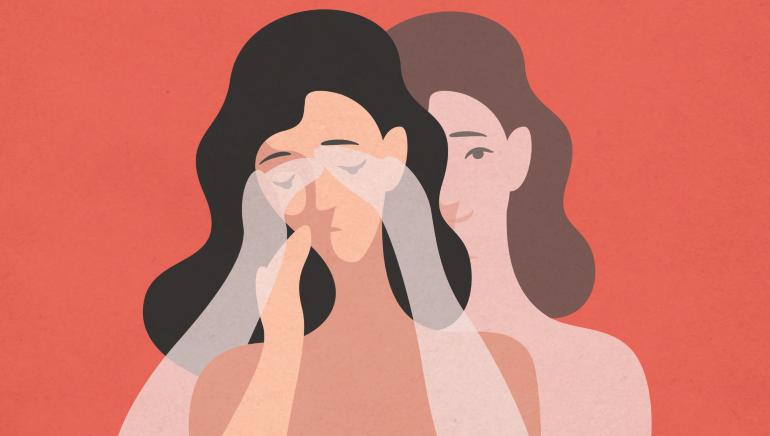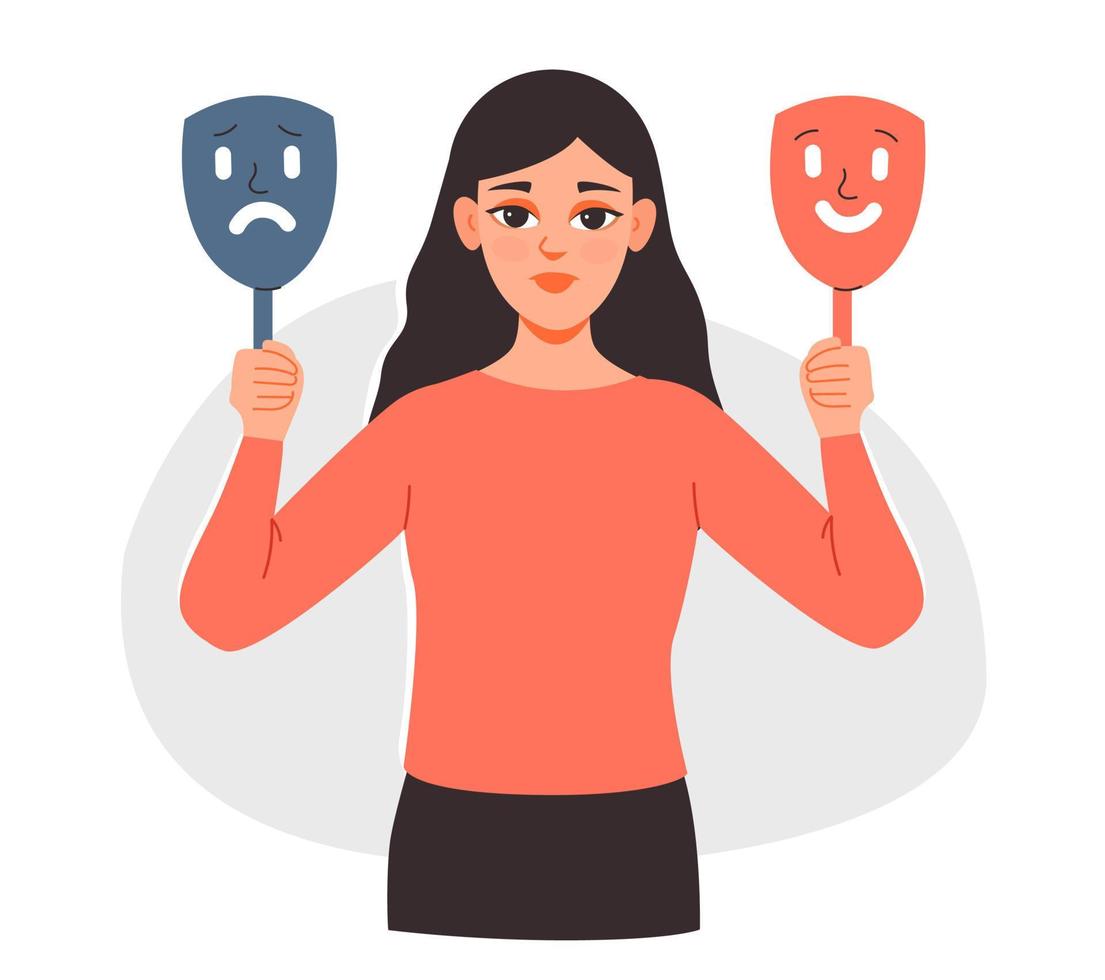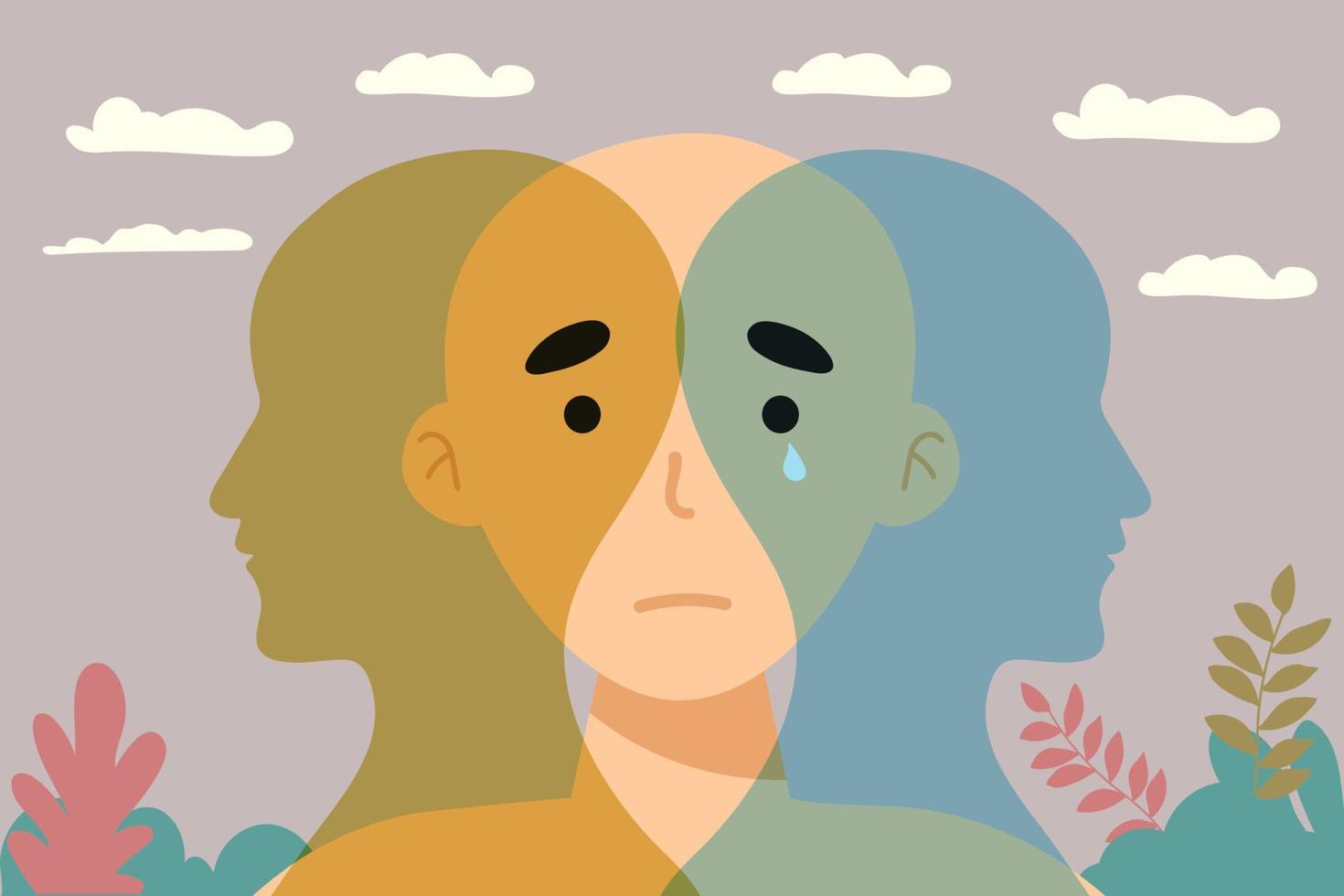Bipolar disorder causes changes in mood, energy, and activity levels. A person with bipolar disorder typically experiences at least one episode of “high” mood, or mania, and a period of “low” mood, or depression.
What is bipolar disorder?

Bipolar disorder (formerly known as manic-depressive illness or manic depression) is a lifelong mood disorder and mental health condition that causes intense shifts in mood, energy levels, thinking patterns and behavior. These shifts can last for hours, days, weeks or months and interrupt your ability to carry out day-to-day tasks.
There are a few types of bipolar disorder, which involve experiencing significant fluctuations in mood referred to as hypomanic/manic and depressive episodes. However, people with bipolar disorder aren’t always in a hypomanic/manic or depressive state. They also experience periods of normal mood, known as euthymia.
Manic episodes

A key feature of bipolar I disorder is manic episodes. To meet the criteria for bipolar I disorder, you must have had at least one manic episode in your life for at least a week with or without ever experiencing a depressive episode.
Mania is a condition in which you have a period of abnormally elevated or irritable mood, as well as extreme changes in emotions, thoughts, energy, talkativeness and activity level. This highly energized level of physical and mental activity and behavior is a change from your usual self and is noticeable by others.
People who are in manic states may indulge in activities that cause them physical, social or financial harm, such as suddenly spending or gambling extreme amounts of money or driving recklessly. They also occasionally develop psychotic symptoms, such as delusions and hallucinations, which can cause difficulties in distinguishing bipolar disorder from other disorders such as schizophrenia or schizoaffective disorder.
People with certain types of bipolar such as bipolar II disorder experience hypomania, which is a less severe form of mania. It doesn’t last as long as manic episodes and it doesn’t interfere with daily functioning as much.
Depressive episodes

During a depressive episode, you experience a low or depressed mood and/or loss of interest in most activities, as well as many other symptoms of depression, such as:
- Tiredness.
- Changes in appetite.
- Feelings of worthlessness and hopelessness.
Symptoms

There are several types of bipolar and related disorders:
- Bipolar I disorder. You’ve had at least one manic episode that may come before or after hypomanic or major depressive episodes. In some cases, mania may cause a break from reality. This is called psychosis.
- Bipolar II disorder. You’ve had at least one major depressive episode and at least one hypomanic episode. But you’ve never had a manic episode.
- Cyclothymia. You’ve had at least two years — or one year in children and teenagers — of many periods of hypomania symptoms and periods of depressive symptoms. These symptoms are less severe than major depression.
- Other types. These types include bipolar and related disorders caused by certain drugs or alcohol, or due to a medical condition, such as Cushing’s disease, multiple sclerosis or stroke.
These types may include mania, or hypomania, which is less extreme than mania, and depression. Symptoms can cause changes in mood and behavior that can’t be predicted. This can lead to a lot of distress and cause you to have a hard time in life.
Bipolar II disorder is not a milder form of bipolar I disorder. It’s a separate diagnosis. While the manic episodes of bipolar I disorder can be severe and dangerous, people with bipolar II disorder can be depressed for longer periods of time.
Bipolar disorder can start at any age, but usually it’s diagnosed in the teenage years or early 20s. Symptoms can differ from person to person, and symptoms may vary over time.
Other features of bipolar disorder
Symptoms of bipolar disorders, including depressive episodes, may include other features, such as:
- Anxious distress, when you’re feeling symptoms of anxiety and fear that you’re losing control.
- Melancholy, when you feel very sad and have a deep loss of pleasure.
- Psychosis, when your thoughts or emotions disconnect from reality.
The timing of symptoms may be described as:
- Mixed, when you have symptoms of depression and mania or hypomania at the same time.
- Rapid cycling, when you have four mood episodes in the past year where you switch between mania and hypomania and major depression.
Also, bipolar symptoms may happen when you’re pregnant. Or symptoms can change with the seasons.
Bipolar Disorder Causes

There is no single cause of bipolar disorder. Researchers are studying how a few factors may lead to it in some people.
Difficult experiences in childhood, like abuse or losing someone important, can make it more likely for you to form bipolar disorder. Stressful events can also make symptoms worse. If someone in your family has bipolar disorder, you might be more likely to have it too, but it’s not just about genetics – your environment matters too. Some medications, alcohol, and drugs can make bipolar symptoms show up or get worse, so it’s important to talk to your doctor about any concerns.
Bipolar Disorder Risk Factors

When someone develops bipolar disorder, it usually starts when they’re in late adolescence or young adulthood. Rarely, it can happen earlier in childhood. Bipolar disorder can run in families.
Men and women are equally likely to get it. Women are somewhat more likely than men to go through rapid cycling, which is having four or more distinct mood episodes within a year. Women also tend to spend more time depressed than men with bipolar disorder.
Bipolar disorder usually develops later in life for women, and they’re more likely to have bipolar disorder II and be affected by seasonal mood changes.
A combination of medical and mental issues is also more common in women. Those medical issues can include thyroid disease, migraine, and anxiety disorders.
Many people with the condition misuse alcohol or other drugs when manic or depressed. People with bipolar disorder are more likely to have seasonal depression, co-existing anxiety disorders, posttraumatic stress disorder, and obsessive-compulsive disorder.
Diagnosing bipolar disorder

A mental health or healthcare professional can diagnose bipolar disorder using criteria set out in the Diagnostic and Statistical Manual of Mental Disorders, 5th edition, text revision (DSM-5-TR).
The NIMH explains that to receive a diagnosis of bipolar I disorder, a person must have experienced symptoms of mania for at least 7 days, or fewer than 7 days if symptoms were severe enough to require hospitalization. They may also have had a depressive episode lasting at least 2 weeks.
To receive a diagnosis of bipolar II disorder, a person must have experienced at least one cycle of hypomania and depression.
A healthcare professional may perform a physical examination and order some diagnostic tests, including blood and urine tests, to help rule out other causes of symptoms.
It can be challenging for a healthcare professional to diagnose bipolar disorder. People are more likely to seek help with a low mood than a high mood. As a result, it can be difficult for a healthcare professional to distinguish it from depression.
If a person has psychosis, a healthcare professional may misdiagnose their condition as schizophrenia.
Other complications that may occur with bipolar disorder are:
- substance use to cope with symptoms
- post-traumatic stress disorder (PTSD)
- anxiety disorder
- attention deficit hyperactivity disorder (ADHD)
The NIMH urges healthcare professionals to look for signs of mania in the person’s history to prevent misdiagnosis. Certain antidepressants can trigger mania in some people.
While a person with bipolar disorder may experience periods of neutral mood without symptoms, bipolar disorder is a lifelong condition.
Bipolar disorder and suicide

The depressive phase of bipolar disorder is often very severe, and suicide is a major risk factor. In fact, people suffering from bipolar disorder are more likely to attempt suicide than those suffering from regular depression. Furthermore, their suicide attempts tend to be more lethal.
The risk of suicide is even higher in people with bipolar disorder who have frequent depressive episodes, mixed episodes, a history of alcohol or drug abuse, a family history of suicide, or an early onset of the disease.
Suicide warning signs include:
- Talking about death, self-harm, or suicide.
- Feeling hopeless or helpless.
- Feeling worthless or like a burden to others.
- Acting recklessly, as if one has a “death wish”.
- Putting affairs in order or saying goodbye.
- Seeking out weapons or pills that could be used to commit suicide.
Living with bipolar disorder

Bipolar disorder is a condition of extremes. A person with bipolar disorder may be unaware they’re in the manic phase.
After the episode is over, they may be shocked at their behaviour. But at the time, they may believe other people are being negative or unhelpful.
Some people with bipolar disorder have more frequent and severe episodes than others.
The extreme nature of the condition means staying in a job may be difficult and relationships may become strained. There’s also an increased risk of suicide.
During episodes of mania and depression, someone with bipolar disorder may experience strange sensations, such as seeing, hearing or smelling things that are not there (hallucinations).
They may also believe things that seem irrational to other people (delusions). These types of symptoms are known as psychosis or a psychotic episode.
How is bipolar disorder treated?

You can treat bipolar disorder effectively but it needs careful and ongoing management. Treatment usually involves long-term medicines. It may also involve psychological therapy and other lifestyle changes.
Initial treatment
Most people with bipolar disorder are first prescribed medicines to stabilise their mood. A doctor will choose and adjust medicines to suit the person’s specific needs. Types of medicines might include mood stabilisers and/or antipsychotics.
Electroconvulsive therapy (ECT) is sometimes recommended by psychiatrists. This is only when medicines aren’t effective in stabilising someone’s mood.
Ongoing treatment
The goal of ongoing treatment is to prevent relapse, build resilience and help to improve quality of life. This may involve one or more of the following medicines:
- antidepressant medicines — may be helpful for a short period of time. It is important that they are only taken in combination with a mood stabiliser for people with bipolar disorders
- lithium, a long-term mood stabiliser
- Anticonvulsant medicines such as valproate, carbamazepine and lamotrigine
- antipsychotic medicines such as olanzapine, aripiprazole, quetiapine and risperidone
To manage bipolar disorder effectively, it’s important to take your medicines exactly as directed. Tell your doctor if you’re concerned about any side effects. Your doctor may be able to change your treatment or suggest ways to manage the problem.
Therapy
Psychological therapies (‘talking therapies’) can help to manage bipolar disorder, alongside medicines. These include:
- psychotherapy
- cognitive behavioural therapy (CBT)
- counselling
These therapies can help to reduce the risk of relapse and improve quality of life. During therapy, you may learn how to think differently about events in your life, and respond to them in a helpful way. Therapy can also help you learn how to cope with stressors that may have triggered episodes in the past.
Can bipolar disorder be prevented?

There’s no guaranteed way to prevent someone from developing bipolar disorder. But many people manage it successfully with the right treatment and support. A successful strategy may include medicines, therapy and other self-help strategies.
If you have a family history of bipolar disorder, it’s important to be aware of early warning signs. Your friends and family need to be aware of them too. Avoid taking substances that can trigger manic or hypomanic episodes such as:
- recreational drugs such as cocaine, ecstasy and amphetamines (also known as amphetamines)
- too much caffeine
Other ways to prevent relapses or episodes include:
- learning to manage your stress
- ensuring you get enough sleep














Leave a comment